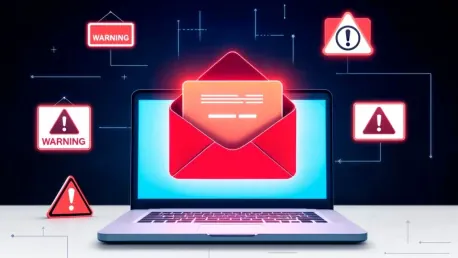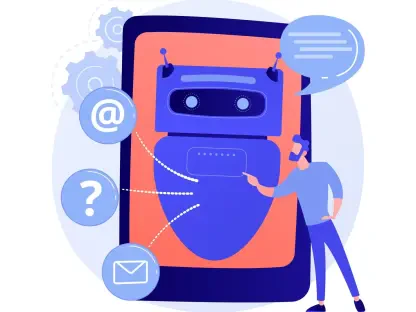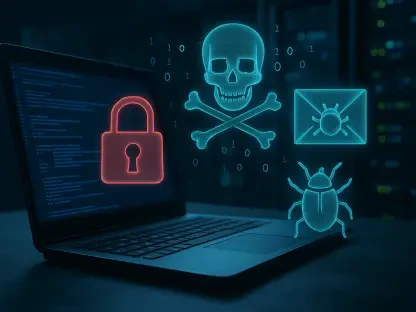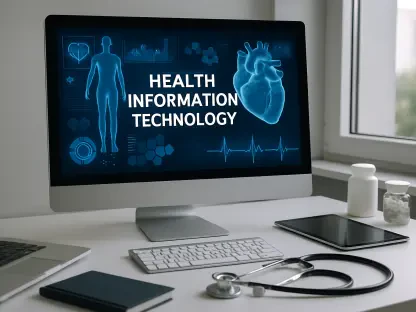Healthcare organizations have increasingly become lucrative targets for cybercriminals due to the vast amounts of sensitive data they manage. The email threat landscape has grown more sophisticated, posing significant risks to patient data, financial transactions, and regulatory compliance. This article delves into the emerging trends and tactics employed by cybercriminals, emphasizing the critical need for robust security measures and proactive defense strategies to safeguard healthcare entities.
Evolving Threat Landscape
Persistent Dominance of Business Email Compromise (BEC)
Business Email Compromise (BEC) continues to be a formidable threat to healthcare organizations. Despite advancements in security measures, BEC attacks have shown incredible resilience and adaptability, with around 88% of these attacks leveraging executive and CEO spoofing. Cybercriminals have fine-tuned their impersonation skills, making it increasingly difficult for employees to differentiate between a legitimate request and a fraudulent attempt. This form of attack often results in the unauthorized transfer of funds and the exposure of sensitive data, causing substantial financial and reputational damage.
In many cases, attackers meticulously research their targets, gathering detailed information from social media and corporate websites to craft convincing emails. These spoofed emails often appear to come directly from senior executives or trusted business partners, urging employees to act quickly on urgent matters. The sense of urgency and apparent authority in these emails often bypasses standard verification processes, leading to costly mistakes. Healthcare organizations must strengthen their defenses by implementing advanced email authentication protocols and fostering a culture of vigilance among employees to recognize and report suspicious emails promptly.
Artificial Intelligence Enhances Phishing Attacks
A significant trend in the current cybersecurity landscape is the integration of artificial intelligence (AI) into phishing schemes. Cybercriminals now utilize AI tools to craft highly realistic synthetic media, including images, voice recordings, and deepfake videos, making it even more challenging for individuals to distinguish between genuine communication and fraudulent attempts. These advanced techniques increase the efficacy of phishing attacks, as employees may inadvertently trust and act upon these sophisticated deceptions.
The use of AI in phishing allows cybercriminals to automate and scale their attacks, targeting a larger number of individuals and organizations with tailored, high-quality content. In the healthcare sector, where the stakes are particularly high, the potential damage from a successful phishing attack can be immense, jeopardizing patient data and financial information. To counter these threats, healthcare organizations must adopt cutting-edge email security solutions capable of detecting AI-generated content and continuously educate their workforce on the evolving nature of phishing attacks. Regular training sessions and simulated phishing exercises can help employees stay alert and improve their ability to identify and handle suspicious communications.
New Methods and Tools of Cybercrime
Rise of Infostealers
Infostealers have become a prominent tool in the arsenal of cybercriminals targeting healthcare organizations. Malware such as Stealc and AgentTesla infiltrate networks stealthily, often remaining undetected while collecting valuable data such as patient records, financial information, and proprietary medical research. The increasing reliance on digital patient records and cloud-based solutions within the healthcare sector exacerbates the risks posed by these malicious programs.
Infostealers operate by embedding themselves within trusted applications or system processes, making them difficult to detect using traditional security measures. Once inside the network, they methodically extract sensitive information and transmit it back to the attackers, who may use the data for financial gain, identity theft, or further malicious activities. The potential consequences for healthcare organizations are severe, including regulatory penalties, legal liabilities, and the loss of patient trust. To mitigate these risks, healthcare providers must implement robust endpoint protection and network monitoring solutions, coupled with regular security audits and vulnerability assessments to identify and address potential weaknesses before they can be exploited.
Emerging QR Code-Based Phishing Attacks
The rise of QR code-based phishing attacks represents a new frontier in cyber threats targeting the healthcare sector. As employees increasingly rely on QR codes to access various types of information, cybercriminals have devised schemes to exploit this convenience. Malicious QR codes can redirect users to fake websites designed to capture login credentials or deploy malware onto their devices.
These attacks are particularly insidious because QR codes are often perceived as a fast and secure way to obtain information or complete transactions. Employees may not exercise the same level of scrutiny when scanning QR codes as they do when clicking on email links, making them more susceptible to these types of attacks. To protect against QR code-based phishing, healthcare organizations should educate staff about the risks associated with scanning unfamiliar QR codes and encourage them to verify the authenticity of the codes before scanning. Additionally, organizations can deploy security solutions that can detect and block access to malicious websites in real time.
Vulnerabilities and Expanded Impact
Exploitation of Healthcare Ecosystem’s Interconnectivity
The interconnected nature of the healthcare ecosystem, involving providers, insurers, and third-party vendors, introduces significant vulnerabilities that cybercriminals can exploit. A single compromised email account can serve as an entry point for attackers to gain access to a broader network, amplifying the impact of their malicious activities. This interconnectivity means that a breach in one part of the ecosystem can quickly spread to other connected entities, leading to widespread disruptions and data leakage.
Cybercriminals often exploit these connections by targeting weaker links within the network, such as smaller vendors or suppliers with less robust security measures. Once they gain access, they can move laterally across the network, harvesting sensitive information and potentially causing significant damage. This necessitates a comprehensive approach to cybersecurity that includes not only internal defenses but also rigorous vetting and continuous monitoring of third-party partners. Establishing clear cybersecurity protocols and requirements for all parties within the ecosystem can help minimize the risks associated with interconnected networks.
Increasing Sophistication and Automation of Threats
Healthcare organizations have increasingly become prime targets for cybercriminals due to the vast amounts of sensitive information they handle, including patient records, financial data, and other confidential details. The email threat landscape has evolved to become more sophisticated and harmful, exposing significant risks to the integrity of patient data, financial transactions, and regulatory compliance. This development underscores the need for strong security measures and proactive defense strategies. Cybercriminals employ various emerging trends and tactics to breach systems, making it imperative for healthcare entities to remain vigilant. Enhanced security protocols and regular staff training are crucial to defend against phishing attacks, ransomware, and other malicious activities. This article explores these emerging cyber threats and emphasizes the importance of a comprehensive cybersecurity strategy to protect healthcare organizations from potential breaches and ensure the safety and confidentiality of all managed data.









